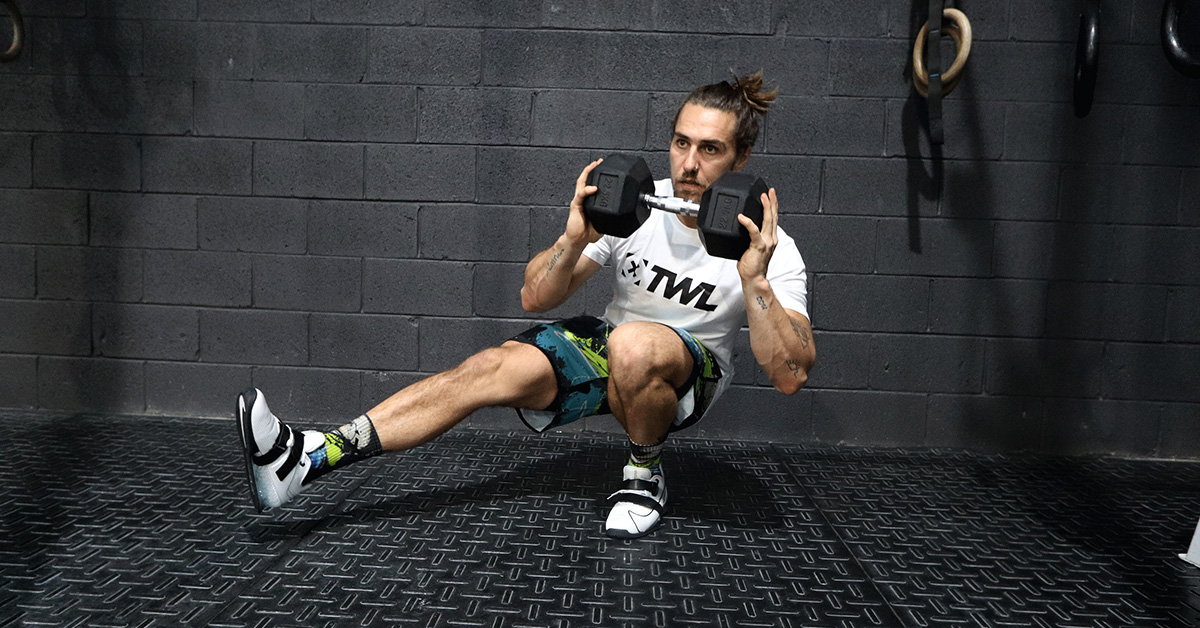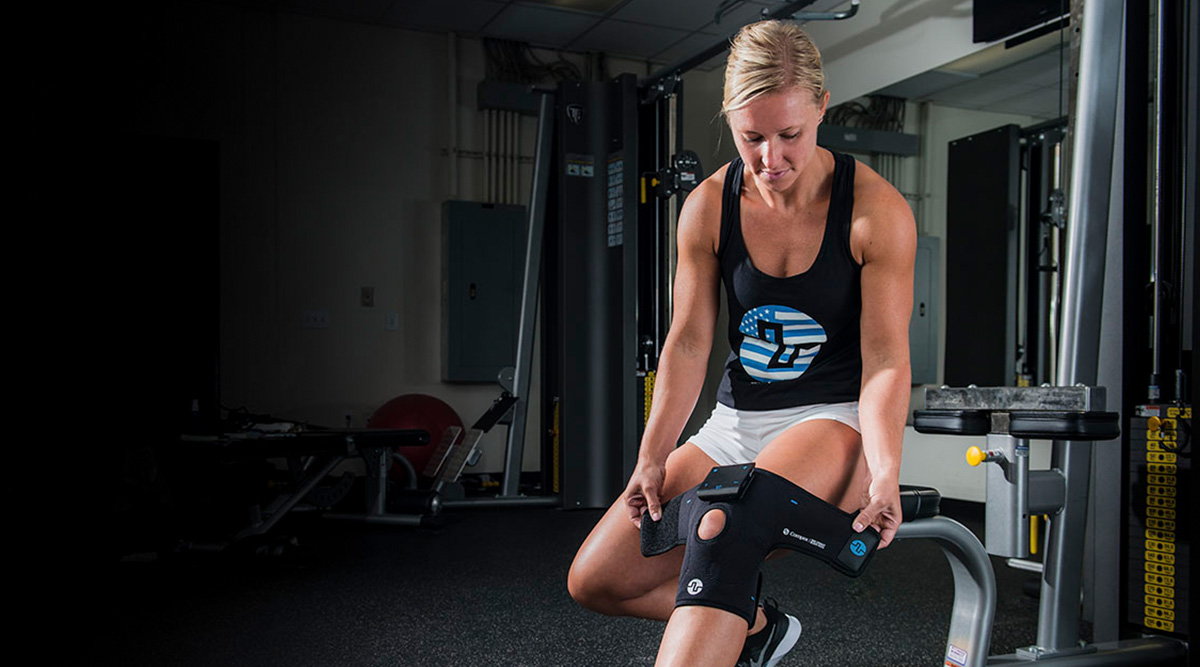When you need to alleviate knee pain, the first step is to assess what is going wrong.
The knee is a complex joint with muscles, ligaments, and tendons that interact with each other and the bones they are connected to. Irritation, inflammation, weakness, immobility, and overuse can all cause pain, which, if left untreated, can lead to chronic problems in the knee. If you are experiencing knee pain for the first time, it is best to act immediately and fix the underlying problem.
This post focuses on what you can do to alleviate recurring twinges of pain in and around your knee. If you are experiencing debilitating pain or if any of these suggestions cause further knee pain, see a medical professional.
Factors to Consider to Alleviate Knee Pain
If you are experiencing knee pain, first check these things (or have a friend or coach assess you):
- Posture,
- Foot position
- Muscle strength and mobility
Posture
How is your posture from side to side? Do you tend to place more of your weight on one side than the other?
Relying on one side of your body more than the other increases the strain on the weight-bearing side. When this imbalance is carried into your workouts, your dominant knee takes the hit.
What to do: if you have identified postural problems that might have aggravated your knee, it is probably a good idea to schedule an appointment with a physical therapist or a medical professional to make sure you do not have any underlying structural issues.
That said, if you have been relying more heavily on one side than the other, you probably have muscle imbalances between your left and right sides that could use some work. In addition to core exercises, try these unilateral movements. Perform reps on the weak side first.
Single-leg deadlift
- With a lightweight kettlebell in one hand, stand on one leg.
- Hinge at your hip and lower your torso to the ground, keeping your standing leg slightly bent and raising your other leg behind you.
- Hinge back up. This exercise works a variety of muscles in your leg, which stabilize your knee and ankle.
Partial pistol squats
- Stand on one foot and raise your other leg out in front of you.
- Squat down about 45 degrees, keeping your glutes engaged throughout the movement.
- Stand back up.
- Only do partial squats so you do not further irritate your twinged knee. The purpose of this exercise is to strengthen the leg you have not been relying on as much.
Foot Position
When you stand in bare feet, do your feet collapse into their arches and bring your ankles with them? Called overpronation, this foot position can wreak havoc on your knees (not to mention the rest of your kinetic chain), especially if you do a lot of running or spend a lot of time on your feet.
What to do: while shoes with arch support can provide relief, they won’t solve the problem because your feet will become dependent on the shoes to maintain their arch. Instead, you should focus on mobilizing and strengthening the muscles in your feet.
Myofascial release
- Using a small ball (a golf ball works well), roll out the bottom of your feet.
- Start by going from the base of your big toe down to your heel and back up.
- Roll sideways across the bottom of your feet.
- Spend extra time on places that are particularly tight or tender.
Arch pulses
- Stand on both bare feet.
- Stress your arches so the middle of your foot raises up (your ankle should move as well), but your big toe and heel stay on the ground.
- Release. Repeat 15 to 20 times.
Muscle Strength and Mobility
It is possible that your knee pain is due to restricted muscles that pull your knee out of alignment and/or weak muscles that cause you to rely heavily on your joints, ligaments, and tendons. The common culprits are the quadriceps, hamstrings, and glutes.
Quadriceps
Tight: when quads are tight, they can pull the knee out of alignment, causing a twinge of pain under the kneecap. To release tight quads, simply:
- Stand on one leg.
- Fold your other leg and pull your foot to your rear.
- Stay upright and make sure you do not arch your back.
- Hold for 20 to 30 seconds. Switch sides.
Weak: your quadriceps are responsible for straightening your knee. If weak, they can cause pain in the tendons and ligaments, especially if you do a lot of running or jumping. To strengthen them without stressing your knees more:
Straight leg raise
- Lie on your back on the floor with your legs straight.
- Raise one leg about 45 degrees and lower it, keeping it straight throughout the movement.
- Repeat on the other leg for a total of 20 repetitions.
Wall sits
- With your back against a wall, squat down so your upper legs are parallel to the floor.
- Hold this position for 30 to 60 seconds at a time, bracing your quads the whole time.
Hamstrings
Tight: when your hamstrings are tight, they can lead to pain in your inner knee. Release tight hamstrings by:
Foam rolling
- Roll up and down the back of your leg, focusing extra time and pressure on spots that seem particularly tight or stiff.
Partner hamstring stretch
- Lie on the floor and raise one leg so your partner can grab your foot.
- Have your partner slowly push your foot toward your chest. Make sure you keep your leg mostly straight throughout the movement.
- Once your foot is as far as it can go, your partner should hold it there for about 20 seconds. Then, they should briefly release pressure and immediately return to pushing your foot toward your chest.
- Repeat on both sides.
- A variation of this stretch can be done with a resistance band instead of a partner.
Weak: use these exercises to strengthen weak hamstrings.
Nordic curls
- Kneel on the ground with your feet secured (a partner can hold them or you can place them under a couch).
- Keeping your torso neutral, slowly lower yourself to the ground.
- Use your hands to catch yourself on the way down and push yourself back up, but pull with your hamstrings to return to the top of the movement.
- Do this for 10 to 20 reps.
Roller bridge
- Lie on the ground and place your feet on a foam roller. Your knees should be bent about 90 degrees.
- Lift your hips so you form a straight line from your shoulders to your knees.
- Hold this position for 30 to 60 seconds at a time.
Glutes
Tight: loosen your glutes with these easy movements:
Leg crossover stretch
- Lie on your back on the floor with your legs straight.
- Raise one leg and cross it over to the opposite side of your body until your foot touches the floor. As you do this, keep your knee only slightly bent and get as close as you can to a 90-degree angle.
- Hold this position for 20 to 30 seconds. Switch sides. Repeat as needed.
Happy baby
- Lie on your back on the floor.
- Draw your feet up, allowing your knees to flair out.
- Grab your feet with your hands and pull them toward your chest.
- Hold for 30 seconds at a time.
Weak: as with the quads and hamstrings, weak glutes can place extra stress on the tendons and ligaments around the knee. Strengthen them by:
Clam
- Lie on your side with your knees bent at a 45-degree angle.
- Using your arms to balance yourself on the floor, raise your top knee by rotating at the hip. Keep your feet together and your torso still.
- Lower your knee back down.
- Do for 5 to 15 reps. Switch sides.
With the right assessment and proper action, you can alleviate your knee pain before it puts a stop to your training.














